I turned to the Internet for guidance on how best to heal my tattoo, and I got a load of conflicting advice. Luckily, a plucky girl reporter, it was within my power to solve this problem. I interviewed Toph McDermott, an insanely talented St. Louis-based tattoo artist, and picked his brain about tattoo myths, what to do right after you get a tattoo, and how to prepare before you walk in the shop door.
Images via Chase Elliott Clark/Flickr and Tattoos By Toph Toph McDermott: Do your research. Find a clean and reputable shop and look at portfolios to find an artist who you trust and whose work you like. Once you have done this, listen to their advice. They do this every day and have a lot more insight into what will and won’t work well for a tattoo. Obviously you shouldn’t let someone talk you into something you don’t want, but if you did your research, then you chose this artist because you liked his/her work. Trust that he wants to give you a tattoo that you love AND that he can be proud to have done. TM: There are some skin types that rarely hold ink well. The worst offenders being the palms of the hands and bottoms of the feet. This skin also wraps partially up the sides of the hand/fingers and feet. Basically all the skin with “finger-printing.” If you saw a girl on Pinterest with a fresh word tattoo going down the side of her finger and thought it was cute, I’d recommend against it. TM: Use warm water and antibacterial soap to wash your hands and then your tattoo (make sure to get off any blood/plasma/ink that may have oozed out). Quick showers only, avoid getting the tattoo wet except to wash. Then pat-dry or air-dry, but do not rub-dry. Once dry, I recommend Aquaphor by Eucerin (A&D ointment is my second choice if you’re ballin’ on a budget) as a healing ointment to be applied in very thin layers about four times a day for the first few days until peeling occurs. At that point, I recommend switching to a white fragrance-free lotion, like Lubriderm Fragrance-Free. Continue using that a few times a day for the next few weeks until the shininess goes away. All that said, these are MY aftercare instructions. Your artist may give you slightly different guidelines. Follow them. Different artists have different variations and that’s okay as long as they guarantee their work with free touch-ups (many shops will have a time limit on this though, so don’t wait too long). Almost all aftercare guidelines will have three main components:
Keep clean Keep moisturized Don’t suffocate it
TM: The extreme case would be the person who comes in and gets a nice tattoo and then says, “Is this going to be healed up in time for my canoe/beach trip this weekend?” No, it won’t! Don’t be that guy. The intense sun and dirty water are a huge no-no. So, timing is a big factor. You want to avoid getting tattooed during a time when you’ll have to face adverse conditions for healing. A healing tattoo needs to breathe, so while you do want to reapply throughout the day, you should apply a very, very thin layer. TM: AVOID UV EXPOSURE. This means staying out of the sun and/or liberal use of sunblock. The UV rays in sunlight are the biggest enemy of tattoo longevity. As a general rule, this affects lighter colors first. So someone with, say, a full color portrait that has lots of subtle light skin tones and detail has a lot more to worry about from the sun than someone with, say, a big bold black tribal piece.


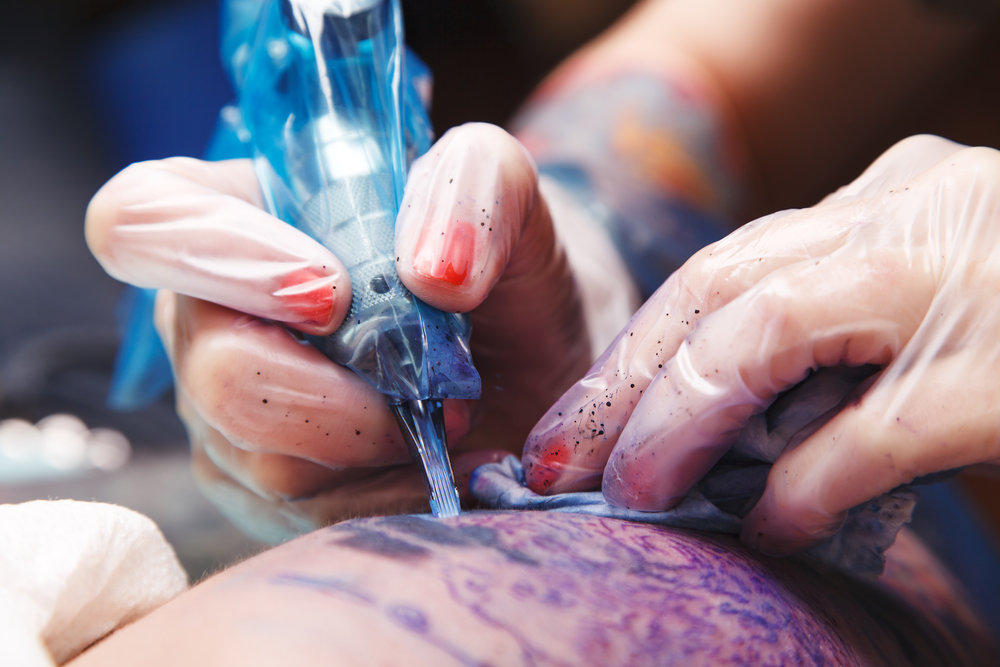
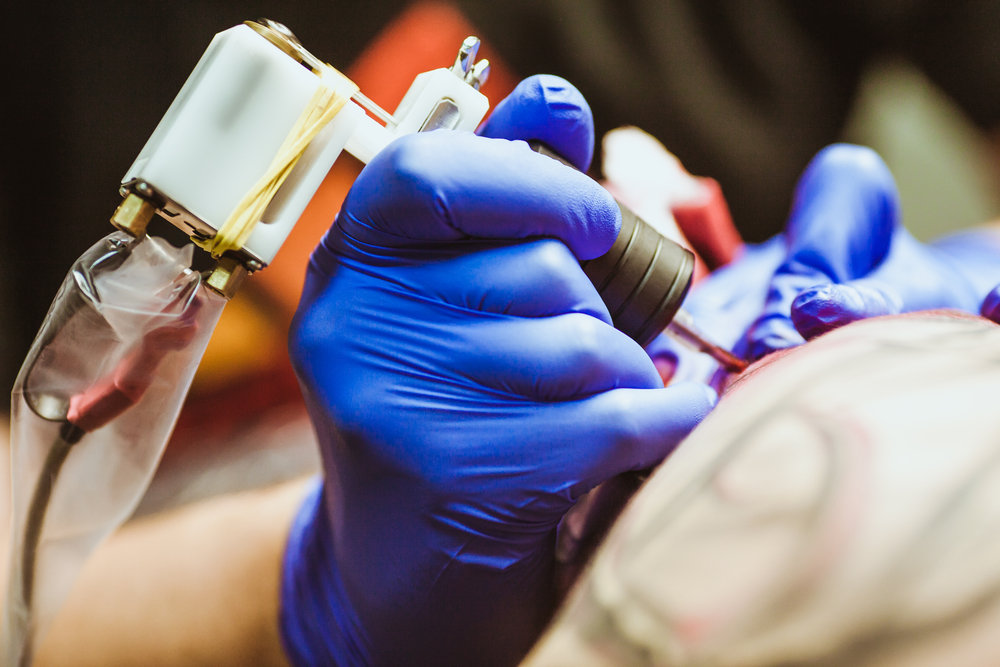
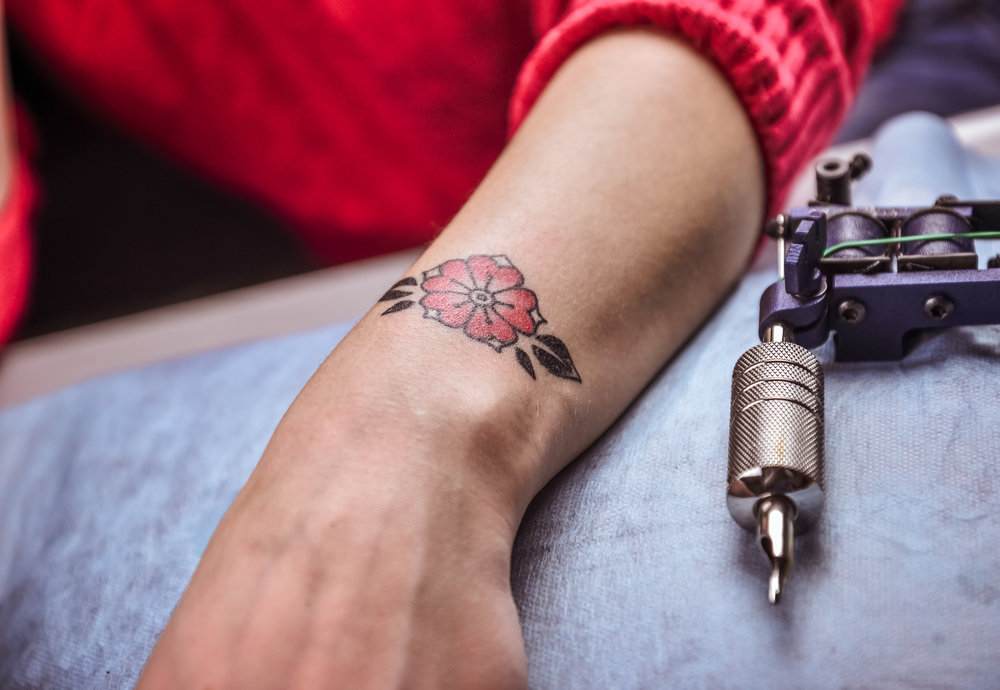

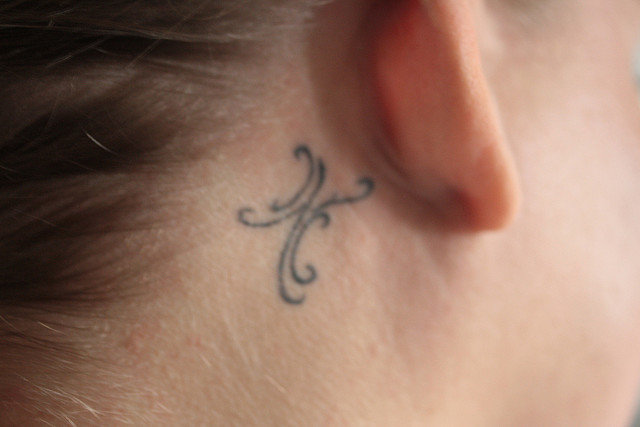

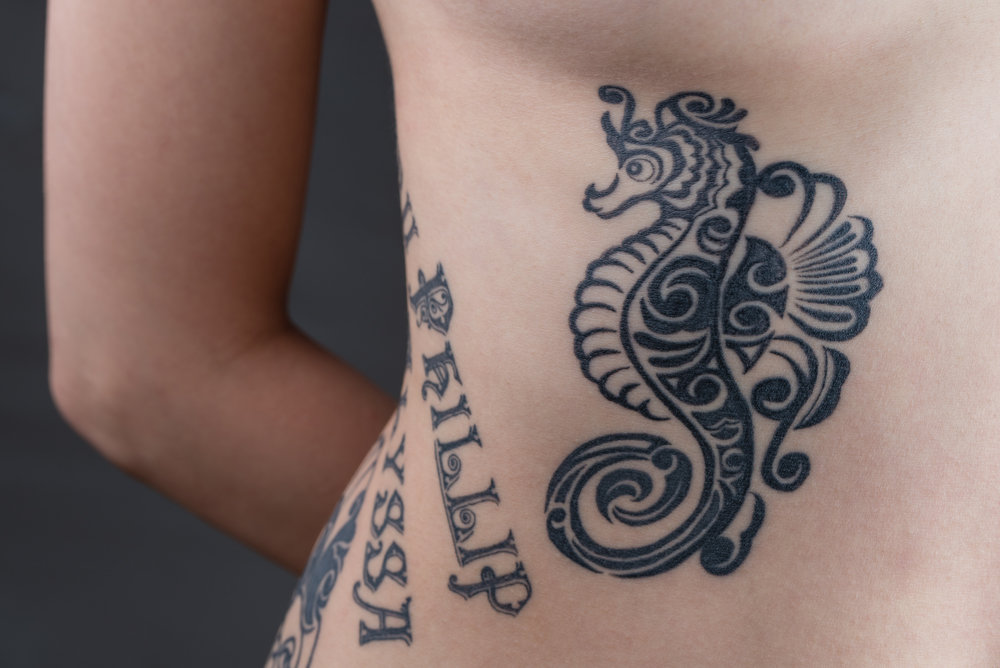
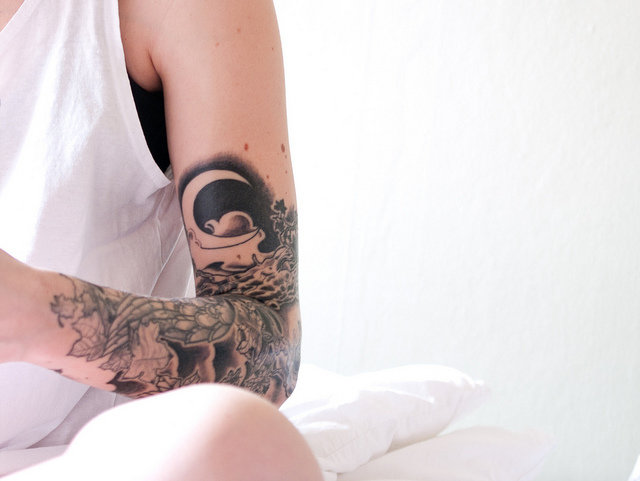

title: “Tattoo Care Tips That Will Keep Your Little Beauty Looking Fine” ShowToc: true date: “2024-10-21” author: “Florence Anderson”
I turned to the Internet for guidance on how best to heal my tattoo, and I got a load of conflicting advice. Luckily, a plucky girl reporter, it was within my power to solve this problem. I interviewed Toph McDermott, an insanely talented St. Louis-based tattoo artist, and picked his brain about tattoo myths, what to do right after you get a tattoo, and how to prepare before you walk in the shop door.
Images via Chase Elliott Clark/Flickr and Tattoos By Toph Toph McDermott: Do your research. Find a clean and reputable shop and look at portfolios to find an artist who you trust and whose work you like. Once you have done this, listen to their advice. They do this every day and have a lot more insight into what will and won’t work well for a tattoo. Obviously you shouldn’t let someone talk you into something you don’t want, but if you did your research, then you chose this artist because you liked his/her work. Trust that he wants to give you a tattoo that you love AND that he can be proud to have done. TM: There are some skin types that rarely hold ink well. The worst offenders being the palms of the hands and bottoms of the feet. This skin also wraps partially up the sides of the hand/fingers and feet. Basically all the skin with “finger-printing.” If you saw a girl on Pinterest with a fresh word tattoo going down the side of her finger and thought it was cute, I’d recommend against it. TM: Use warm water and antibacterial soap to wash your hands and then your tattoo (make sure to get off any blood/plasma/ink that may have oozed out). Quick showers only, avoid getting the tattoo wet except to wash. Then pat-dry or air-dry, but do not rub-dry. Once dry, I recommend Aquaphor by Eucerin (A&D ointment is my second choice if you’re ballin’ on a budget) as a healing ointment to be applied in very thin layers about four times a day for the first few days until peeling occurs. At that point, I recommend switching to a white fragrance-free lotion, like Lubriderm Fragrance-Free. Continue using that a few times a day for the next few weeks until the shininess goes away. All that said, these are MY aftercare instructions. Your artist may give you slightly different guidelines. Follow them. Different artists have different variations and that’s okay as long as they guarantee their work with free touch-ups (many shops will have a time limit on this though, so don’t wait too long). Almost all aftercare guidelines will have three main components:
Keep clean Keep moisturized Don’t suffocate it
TM: The extreme case would be the person who comes in and gets a nice tattoo and then says, “Is this going to be healed up in time for my canoe/beach trip this weekend?” No, it won’t! Don’t be that guy. The intense sun and dirty water are a huge no-no. So, timing is a big factor. You want to avoid getting tattooed during a time when you’ll have to face adverse conditions for healing. A healing tattoo needs to breathe, so while you do want to reapply throughout the day, you should apply a very, very thin layer. TM: AVOID UV EXPOSURE. This means staying out of the sun and/or liberal use of sunblock. The UV rays in sunlight are the biggest enemy of tattoo longevity. As a general rule, this affects lighter colors first. So someone with, say, a full color portrait that has lots of subtle light skin tones and detail has a lot more to worry about from the sun than someone with, say, a big bold black tribal piece.











title: “Tattoo Care Tips That Will Keep Your Little Beauty Looking Fine” ShowToc: true date: “2024-09-30” author: “Alvin Delallo”
I turned to the Internet for guidance on how best to heal my tattoo, and I got a load of conflicting advice. Luckily, a plucky girl reporter, it was within my power to solve this problem. I interviewed Toph McDermott, an insanely talented St. Louis-based tattoo artist, and picked his brain about tattoo myths, what to do right after you get a tattoo, and how to prepare before you walk in the shop door.
Images via Chase Elliott Clark/Flickr and Tattoos By Toph Toph McDermott: Do your research. Find a clean and reputable shop and look at portfolios to find an artist who you trust and whose work you like. Once you have done this, listen to their advice. They do this every day and have a lot more insight into what will and won’t work well for a tattoo. Obviously you shouldn’t let someone talk you into something you don’t want, but if you did your research, then you chose this artist because you liked his/her work. Trust that he wants to give you a tattoo that you love AND that he can be proud to have done. TM: There are some skin types that rarely hold ink well. The worst offenders being the palms of the hands and bottoms of the feet. This skin also wraps partially up the sides of the hand/fingers and feet. Basically all the skin with “finger-printing.” If you saw a girl on Pinterest with a fresh word tattoo going down the side of her finger and thought it was cute, I’d recommend against it. TM: Use warm water and antibacterial soap to wash your hands and then your tattoo (make sure to get off any blood/plasma/ink that may have oozed out). Quick showers only, avoid getting the tattoo wet except to wash. Then pat-dry or air-dry, but do not rub-dry. Once dry, I recommend Aquaphor by Eucerin (A&D ointment is my second choice if you’re ballin’ on a budget) as a healing ointment to be applied in very thin layers about four times a day for the first few days until peeling occurs. At that point, I recommend switching to a white fragrance-free lotion, like Lubriderm Fragrance-Free. Continue using that a few times a day for the next few weeks until the shininess goes away. All that said, these are MY aftercare instructions. Your artist may give you slightly different guidelines. Follow them. Different artists have different variations and that’s okay as long as they guarantee their work with free touch-ups (many shops will have a time limit on this though, so don’t wait too long). Almost all aftercare guidelines will have three main components:
Keep clean Keep moisturized Don’t suffocate it
TM: The extreme case would be the person who comes in and gets a nice tattoo and then says, “Is this going to be healed up in time for my canoe/beach trip this weekend?” No, it won’t! Don’t be that guy. The intense sun and dirty water are a huge no-no. So, timing is a big factor. You want to avoid getting tattooed during a time when you’ll have to face adverse conditions for healing. A healing tattoo needs to breathe, so while you do want to reapply throughout the day, you should apply a very, very thin layer. TM: AVOID UV EXPOSURE. This means staying out of the sun and/or liberal use of sunblock. The UV rays in sunlight are the biggest enemy of tattoo longevity. As a general rule, this affects lighter colors first. So someone with, say, a full color portrait that has lots of subtle light skin tones and detail has a lot more to worry about from the sun than someone with, say, a big bold black tribal piece.











title: “Tattoo Care Tips That Will Keep Your Little Beauty Looking Fine” ShowToc: true date: “2024-10-07” author: “Michael White”
I turned to the Internet for guidance on how best to heal my tattoo, and I got a load of conflicting advice. Luckily, a plucky girl reporter, it was within my power to solve this problem. I interviewed Toph McDermott, an insanely talented St. Louis-based tattoo artist, and picked his brain about tattoo myths, what to do right after you get a tattoo, and how to prepare before you walk in the shop door.
Images via Chase Elliott Clark/Flickr and Tattoos By Toph Toph McDermott: Do your research. Find a clean and reputable shop and look at portfolios to find an artist who you trust and whose work you like. Once you have done this, listen to their advice. They do this every day and have a lot more insight into what will and won’t work well for a tattoo. Obviously you shouldn’t let someone talk you into something you don’t want, but if you did your research, then you chose this artist because you liked his/her work. Trust that he wants to give you a tattoo that you love AND that he can be proud to have done. TM: There are some skin types that rarely hold ink well. The worst offenders being the palms of the hands and bottoms of the feet. This skin also wraps partially up the sides of the hand/fingers and feet. Basically all the skin with “finger-printing.” If you saw a girl on Pinterest with a fresh word tattoo going down the side of her finger and thought it was cute, I’d recommend against it. TM: Use warm water and antibacterial soap to wash your hands and then your tattoo (make sure to get off any blood/plasma/ink that may have oozed out). Quick showers only, avoid getting the tattoo wet except to wash. Then pat-dry or air-dry, but do not rub-dry. Once dry, I recommend Aquaphor by Eucerin (A&D ointment is my second choice if you’re ballin’ on a budget) as a healing ointment to be applied in very thin layers about four times a day for the first few days until peeling occurs. At that point, I recommend switching to a white fragrance-free lotion, like Lubriderm Fragrance-Free. Continue using that a few times a day for the next few weeks until the shininess goes away. All that said, these are MY aftercare instructions. Your artist may give you slightly different guidelines. Follow them. Different artists have different variations and that’s okay as long as they guarantee their work with free touch-ups (many shops will have a time limit on this though, so don’t wait too long). Almost all aftercare guidelines will have three main components:
Keep clean Keep moisturized Don’t suffocate it
TM: The extreme case would be the person who comes in and gets a nice tattoo and then says, “Is this going to be healed up in time for my canoe/beach trip this weekend?” No, it won’t! Don’t be that guy. The intense sun and dirty water are a huge no-no. So, timing is a big factor. You want to avoid getting tattooed during a time when you’ll have to face adverse conditions for healing. A healing tattoo needs to breathe, so while you do want to reapply throughout the day, you should apply a very, very thin layer. TM: AVOID UV EXPOSURE. This means staying out of the sun and/or liberal use of sunblock. The UV rays in sunlight are the biggest enemy of tattoo longevity. As a general rule, this affects lighter colors first. So someone with, say, a full color portrait that has lots of subtle light skin tones and detail has a lot more to worry about from the sun than someone with, say, a big bold black tribal piece.











title: “Tattoo Care Tips That Will Keep Your Little Beauty Looking Fine” ShowToc: true date: “2024-09-19” author: “Christine Hockenberry”
I turned to the Internet for guidance on how best to heal my tattoo, and I got a load of conflicting advice. Luckily, a plucky girl reporter, it was within my power to solve this problem. I interviewed Toph McDermott, an insanely talented St. Louis-based tattoo artist, and picked his brain about tattoo myths, what to do right after you get a tattoo, and how to prepare before you walk in the shop door.
Images via Chase Elliott Clark/Flickr and Tattoos By Toph Toph McDermott: Do your research. Find a clean and reputable shop and look at portfolios to find an artist who you trust and whose work you like. Once you have done this, listen to their advice. They do this every day and have a lot more insight into what will and won’t work well for a tattoo. Obviously you shouldn’t let someone talk you into something you don’t want, but if you did your research, then you chose this artist because you liked his/her work. Trust that he wants to give you a tattoo that you love AND that he can be proud to have done. TM: There are some skin types that rarely hold ink well. The worst offenders being the palms of the hands and bottoms of the feet. This skin also wraps partially up the sides of the hand/fingers and feet. Basically all the skin with “finger-printing.” If you saw a girl on Pinterest with a fresh word tattoo going down the side of her finger and thought it was cute, I’d recommend against it. TM: Use warm water and antibacterial soap to wash your hands and then your tattoo (make sure to get off any blood/plasma/ink that may have oozed out). Quick showers only, avoid getting the tattoo wet except to wash. Then pat-dry or air-dry, but do not rub-dry. Once dry, I recommend Aquaphor by Eucerin (A&D ointment is my second choice if you’re ballin’ on a budget) as a healing ointment to be applied in very thin layers about four times a day for the first few days until peeling occurs. At that point, I recommend switching to a white fragrance-free lotion, like Lubriderm Fragrance-Free. Continue using that a few times a day for the next few weeks until the shininess goes away. All that said, these are MY aftercare instructions. Your artist may give you slightly different guidelines. Follow them. Different artists have different variations and that’s okay as long as they guarantee their work with free touch-ups (many shops will have a time limit on this though, so don’t wait too long). Almost all aftercare guidelines will have three main components:
Keep clean Keep moisturized Don’t suffocate it
TM: The extreme case would be the person who comes in and gets a nice tattoo and then says, “Is this going to be healed up in time for my canoe/beach trip this weekend?” No, it won’t! Don’t be that guy. The intense sun and dirty water are a huge no-no. So, timing is a big factor. You want to avoid getting tattooed during a time when you’ll have to face adverse conditions for healing. A healing tattoo needs to breathe, so while you do want to reapply throughout the day, you should apply a very, very thin layer. TM: AVOID UV EXPOSURE. This means staying out of the sun and/or liberal use of sunblock. The UV rays in sunlight are the biggest enemy of tattoo longevity. As a general rule, this affects lighter colors first. So someone with, say, a full color portrait that has lots of subtle light skin tones and detail has a lot more to worry about from the sun than someone with, say, a big bold black tribal piece.











title: “Tattoo Care Tips That Will Keep Your Little Beauty Looking Fine” ShowToc: true date: “2024-09-04” author: “Michelle Pickering”
I turned to the Internet for guidance on how best to heal my tattoo, and I got a load of conflicting advice. Luckily, a plucky girl reporter, it was within my power to solve this problem. I interviewed Toph McDermott, an insanely talented St. Louis-based tattoo artist, and picked his brain about tattoo myths, what to do right after you get a tattoo, and how to prepare before you walk in the shop door.
Images via Chase Elliott Clark/Flickr and Tattoos By Toph Toph McDermott: Do your research. Find a clean and reputable shop and look at portfolios to find an artist who you trust and whose work you like. Once you have done this, listen to their advice. They do this every day and have a lot more insight into what will and won’t work well for a tattoo. Obviously you shouldn’t let someone talk you into something you don’t want, but if you did your research, then you chose this artist because you liked his/her work. Trust that he wants to give you a tattoo that you love AND that he can be proud to have done. TM: There are some skin types that rarely hold ink well. The worst offenders being the palms of the hands and bottoms of the feet. This skin also wraps partially up the sides of the hand/fingers and feet. Basically all the skin with “finger-printing.” If you saw a girl on Pinterest with a fresh word tattoo going down the side of her finger and thought it was cute, I’d recommend against it. TM: Use warm water and antibacterial soap to wash your hands and then your tattoo (make sure to get off any blood/plasma/ink that may have oozed out). Quick showers only, avoid getting the tattoo wet except to wash. Then pat-dry or air-dry, but do not rub-dry. Once dry, I recommend Aquaphor by Eucerin (A&D ointment is my second choice if you’re ballin’ on a budget) as a healing ointment to be applied in very thin layers about four times a day for the first few days until peeling occurs. At that point, I recommend switching to a white fragrance-free lotion, like Lubriderm Fragrance-Free. Continue using that a few times a day for the next few weeks until the shininess goes away. All that said, these are MY aftercare instructions. Your artist may give you slightly different guidelines. Follow them. Different artists have different variations and that’s okay as long as they guarantee their work with free touch-ups (many shops will have a time limit on this though, so don’t wait too long). Almost all aftercare guidelines will have three main components:
Keep clean Keep moisturized Don’t suffocate it
TM: The extreme case would be the person who comes in and gets a nice tattoo and then says, “Is this going to be healed up in time for my canoe/beach trip this weekend?” No, it won’t! Don’t be that guy. The intense sun and dirty water are a huge no-no. So, timing is a big factor. You want to avoid getting tattooed during a time when you’ll have to face adverse conditions for healing. A healing tattoo needs to breathe, so while you do want to reapply throughout the day, you should apply a very, very thin layer. TM: AVOID UV EXPOSURE. This means staying out of the sun and/or liberal use of sunblock. The UV rays in sunlight are the biggest enemy of tattoo longevity. As a general rule, this affects lighter colors first. So someone with, say, a full color portrait that has lots of subtle light skin tones and detail has a lot more to worry about from the sun than someone with, say, a big bold black tribal piece.










